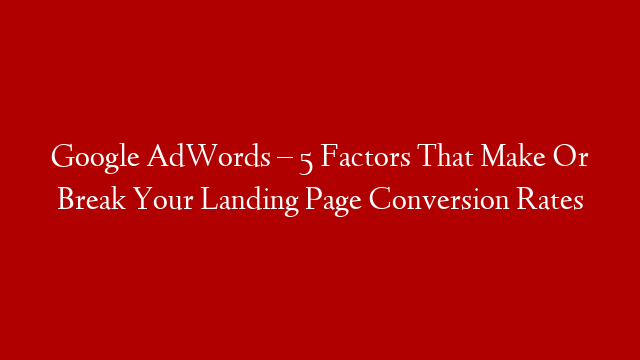The list of potential factors that influence landing page conversion rates is as long as your arm, including everything from site design to what your potential customers had for lunch. But we can be more focused than that.
Fanatical split testers at MarketingExperiments.com have developed what they call the MEC Conversion Index. Here it is:
C = 4M + 3V + 2(I-F) – 2A ©
This “formula” is based on their own research encompassing many client web sites. It is not a true mathematical relationship in any formal sense, but it can help you understand which factors affect landing page conversion rates at a practical level.
Let’s put it in English first:
“Web Conversion is a function of buyer motivation [4M], the strength of your value proposition [3V], the friction and incentive elements in your offer [2(I-F)], and potential buyer anxiety [2A].”
Motivation is how strongly a potential buyer actually wants what you are offering. The strength of your value proposition is how valuable a potential buyer perceives your offer to be. Incentive elements are the “extras” you offer along with your main product (bonuses or other incentives, like free shipping), and friction is the perception of a potential buyer that there’s stuff in the way of a purchase (like many steps in the order process, for example). Anxiety is what it sounds like–how risky your potential buyer perceives a purchase to be.
Looking back at the formula, you will notice that the numbers in front of the factors tell you about the relative strength of each component. For example, motivation outweighs almost everything else, if taken by itself. But your value proposition is almost as important. A strong perceived value can get you past a potentially less motivated buyer, but if the motivation dips too low, no amount of perceived value will overcome it.
Also notice the 2(I-F). This tells you that friction drags on your incentives, but the 2 tells you that friction alone won’t overcome buyer motivation or perceived value. Finally, anxiety by itself takes away from your likelihood of conversion. If a potential buyer thinks your offer is too risky, they are less likely to purchase.
Based on this formula, your goal is to increase buyer motivation, your perceived value, and a potential buyer’s incentive, while decreasing friction and anxiety. You don’t have absolute control over each factor, of course. If a buyer is not motivated to buy what you’re selling (or to accept whatever you’re offering), no amount of brilliant sales copy will improve your sales. That’s not the point.
The point is for you to focus on what you can control. You can increase buyer motivation by targeting more motivated buyers! You can improve your sales copy and your order process to increase your perceived value and to remove speed bumps that drive your conversion rate down.
Now that you know what to focus on, you will have a better idea of what factors to split test to improve your landing page conversion rates to get higher profits from your Google AdWords advertising.



